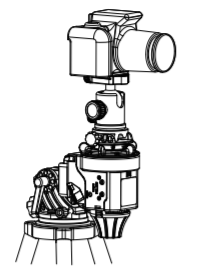
|
Panning Timelapse Test |
|
|
[Aug. 2020]
The video below was an experiment I did to see how panning during the creation of a timelapse would work out. For this, I used the Sky Watcher Star Adventurer tracking mount because the axis of its rotation can be pointed straight up, as it is designed for this kind of application in mind. However, note that compared to mounting a camera on a stationary tripod, star trailing will be made worse or reduced, depending on both the pointing direction and the panning direction. For this experiment, I shot the timelapse frames at a rate of 2 per minute (20 sec. exposures @ ISO 1600) using a Sigma 15mm fisheye lens on a Nikon D600. The rate and exposure time is about what I normally use when shooting untracked timelapse sequences on a stationary tripod for things like meteor showers. Initially the camera is pointed NE and pans South. The tracker "hemisphere" was set to N (clockwise rotation), and the panning speed was at 1 x sidereal rate. The first bright object rising (about 1/3 into the video) is Mars, with the Pleiades visible to its left. Later the panning direction was reversed ("hemisphere" set to S) and the tracking speed was reduced to 0.5 x sidereal rate. For the northward pan it might appear that the panning speed was actually increased, but in reality the stars only seem to be moving by faster because the panning is against the sky's movement. The bright object rising to the left of Orion is Venus. For the final timelapse output, I used Lightroom's ability to partially compensate for the extreme distortion of the view as well as to crop the frames down to a 16:9 aspect ratio. Motion in the full frame of the already-distorted view from a fisheye lens turns out to be pretty disconcerting. Photoshop was used to import the frames and export to a video file. To see more detail, view the video full-screen in up to 4K resolution. Conclusions... Especially since my all-night timelapse sequences typically go for 6-10 hours, 1 x sidereal rate is probably the highest speed I would use for a pan. Depending on the pointing and panning direction, 0.5 x sidereal rate might be better. An even slower pan rate would be nice too, but the Star Adventurer cannot go any slower (only faster). Extremely wide angle lenses cause the star paths to be very distorted, so a panning timelapse would probably be best with a little longer focal length rectilinear lens. In addition, with an extremely wide angle lens, the total field of view could be more than 180° horizontally, so a lot of care has to be used to ensure that nothing will be obstructing the view later in the evening. |
|
